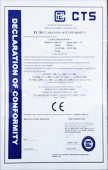Lasers for Medical Treatment |
| |
Laser used in medical field is the important high-tech medical technology in this century, laser medical treatment relates to all clinical disciplines, such as ophthalmology, dermatology, surgery, dentistry, oncology, cancer, etc. Laser has a breakthrough in medical treatment, and different wavelengths suit for different therapeutic areas.
Changchun New Industries (CNI) founded in 1996, is a manufacturer of solid-state and diode laser systems. CNI laser features with high performance, high reliability, and specifically designed for OEM, scientific, medical, industrial and instrumentation use. In addition, CNI lasers are ISO-9001, FDA, CE, RoHS and JQA certified. CNI can provide different lasers for medical treatment with free space and pigtailed versions. Also the accessories related are available for a total solution from customers. |
|
| |
| Photodynamics Therapy |
| |
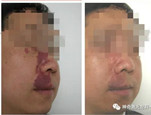
|
Photodynamic therapy (PDT) is a new technique to treat tumor after surgery, chemotherapy and radiotherapy. It has the advantages of small trauma, low toxicity, good selectivity and high applicability.
The principle is to apply a drug delivery method to give photosensitive drugs and then irradiate the tumor site with a specific wavelength light source at a certain time interval; using the photosensitizing property of photosensitive drugs, the photosensitive drugs selectively gathered in the tumor tissue are activated to produce a series of chemical, physical and biological light reactions to destroy the tumor under the excitation of the light source. The photosensitized drugs in the new generation photodynamic therapy will transfer energy to the surrounding oxygen to generate highly active monomorphic oxygen. The monomorphic oxygen reacts with nearby biomolecules to produce cytotoxicity and thus kill tumor cells.
Light source is one of the necessary factors to ensure the smooth implementation of photodynamic therapy. A good light source should have the following characteristics: |
| |
| Laser source characteristics: |
| ■ The wavelength is near the absorption peak of photosensitive drugs |
■ The light source has a certain amount of tissue penetration during use |
| ■ The optical power can be adjusted |
■ The laser can be connect with optical fiber to ensure more accurate treatment targeting points |
| Common wavelengths: |
| 405nm, 457nm, 532nm, 561nm, 577nm, 589nm, 635nm, 808nm, Multi-wavelength laser, etc. |
Other wavelengths can be customized. |
| Accessories: |
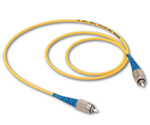 |
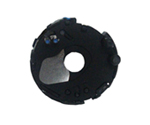 |
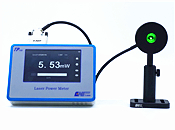 |
 |
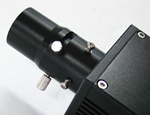 |
Fiber Patch Cables |
Beam Shutter |
Power Meter |
Laser Goggles |
Portable variable attenuator |
| |
| Laser Therapy |
| |
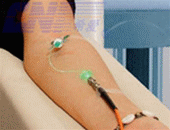
|
| Areas of application: |
|
| ■ External laser therapy |
■ Interstitial laser therapy |
| ■ Intra-articular laser therapy |
■ Intravenous laser therapy |
| ■ Pain therapy |
■ Photodynamic therapy |
| Common wavelengths: |
|
| 447nm, 532 nm, 589 nm, 655 nm, 810 nm... |
With free space or fiber coupling output option, usually the power is 5~100 mW for 447 nm blue laser, 5~50 mW for 532 nm green laser and 589 nm yellow laser, both power and frequency can be adjusted individually.
|
| |
| Laser for Ophthalmology |
| |
|
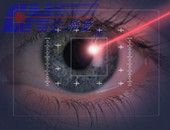
|
Eyes are the most sophisticated, one of the most important organs. Also eyes are very fragile and vulnerable. Once the eyeball appears lesion, it is difficult to remove the lesion safely by normal surgery. Laser treatment for fundus diseases is so effective that it has even become the first choice for certain fundus diseases. One of the more clinically used laser treatment devices is the multi-wavelength fundus laser. It integrates three wavelengths of laser light - yellow, red and green in one, and can instantly switch between red, green and yellow wavelengths without time lag. It can meet the laser treatment of various fundus diseases, with the characteristics of simple, rapid, minimally invasive and effective, and is a technology that cannot be replaced by other treatment methods, and is globally recognized as the "gold standard" for laser treatment of fundus diseases.
Fundus tissues have different absorption rates for different wavelengths of the laser. Clinically, using these characteristics, different colors of lasers can be selected to treat different diseases, for example:
| |
| 1. Melanin and hemoglobin have strong absorption of green light, which can be used to select green light for laser photocoagulation. |
| 2.The spot area does not absorb yellow light, so you can choose to treat the area around the macula to avoid visual impairment caused by accidental laser injury to the macula. |
| 3. The absorption rate of hemoglobin to red light is low, so red light has a high penetration of blood. For patients with vitreous hemorrhage, red light can be selected for fundus photocoagulation. |
| Areas of application: |
|
| ■ Retinal photocoagulation |
■ Trabecular angioplasty |
| ■ Iridotomy |
■ Lamellar keratoplasty |
| ■ Cataract surgery |
■ Vitreous Lysis |
| Common wavelengths: |
|
| 532 nm, 561nm, 577nm, 635nm, 671 nm, 810 nm, 980 nm, 1064 nm, 1320 nm, Multi-wavelength laser |
Normally several millijoules are needed for pulsed laser, such as 2 mJ for 532 nm laser and 10mJ for 1064 nm laser. The power is around several watts such as 2 W, 3 W for 532 nm green laser.
|
|
| |
| Laser for Dermatology |
| |
|

|
Laser for dermatology treatment has also made rapid progress over the past decade. In Europe, America, Japan and other countries, dermatologic surgery uses non-intervention type of treatment to achieve a good therapeutic purposes, instead of traditional surgery, transurethral resection, skin grafting and other technologies. Currently, the laser has been widely used in in varieties of skin and beauty items.
| Areas of application: |
|
| ■ Vascular lesions |
■ Pigmented lesions |
| ■ Onychomycosis |
■ Tattoo removal |
| ■ Hair removal |
■ Laser resurfacing |
| Common wavelengths: |
|
| 532 nm, 593 nm, 650 nm, 750 nm, 808 nm, 980 nm, 1064 nm, 1085 nm, 1320 nm, 1342 nm, 1550 nm... |
| Normally single pulse energy for pulsed laser needs hundreds to thousands millijoules such as 400 mJ for 532 nm, 800/ 1600 mJ for 1064 nm with several hertz Rep.rate. |
| CNI lasers: |
| LPS-L-532/ 1~450 mJ/ 1~10 Hz |
LPS-M-1064/ 1~10 J/ 1~20 Hz |
| LPS-L-1064/ 350~1000 mJ/ 1~10 Hz |
|
|
|
| |
| Laser for Surgery |
| |
|

|
Laser surgery uses laser light to remove diseased tissues or treat bleeding blood vessels. Laser surgery may also be used to remove wrinkles, sunspots, tattoos, or birthmarks.
| Areas of application: |
|
| ■ Oncology (cancer treatment) |
■ Varicose veins |
| ■ Gallstones |
■ Lithotripsy |
| ■ Urological surgery |
■ Gynecological surgery |
| Common wavelengths: |
|
| 447nm, 532 nm, 561nm, 577nm, 635nm, 810 nm, 980 nm, 1064 nm, 1320 nm, 1470 nm... |
| Especially the double pulsed frequency doubling laser type with 532 nm and 1064 nm combined for 120 mJ/ 160 mJ of single pulse energy, 240/ 320 mJ of double pulse energy. |
|
|
|
| Lasers Related |
| |
| YL-455/ 1~25W |
YL-520/ 1~6W |
YL-635/ 1~3W |
| YL-F-980/ 808/ 520/ 455/ 23W |
YL-F-980/ 808/ 635/ 455/ 23W |
YL-S-980/ 808/ 635/ 520/ 455/ 24W |
| |
Wavelengths: 360 nm, 375 nm, 405 nm, 447 nm, 455 nm, 457 nm, 465 nm, 473 nm, 488 nm, 514.5 nm, 520 nm, 532 nm, 543 nm, 556 nm, 561 nm, 577 nm, 589 nm, 593 nm, 635 nm, 650 nm, 665 nm, 671 nm, 690 nm, 750 nm, 808 nm, 810 nm, 830 nm, 885 nm,
980 nm, 1040 nm, 1064 nm, 1320 nm, 1342 nm, 2096 nm, 2200 nm, 2796 nm, etc. |
|
| |
| Related Research of CNI Laser in Medicine from Customers |
(1) Inhibition of NF-κB in Tumor Cells Exacerbates Immune Cell Activation Following Photodynamic Therapy
(Int. J. Mol. Sci. 2015, 16, 19960-19977; doi:10.3390/ijms160819960) (CNI-671 nm)
(2) An in vitro study of the photodynamic effect of rose bengal on Trichophyton rubrum
(J. Biophotonics 7, No. 6, 410–417 (2014) / DOI 10.1002/jbio.201200168) (CNI-532 nm)
(3) Local Field Enhanced Au/CuS Nanocomposites as Efficient Photothermal Transducer Agents for Cancer Treatment
(Journal of Biomedical Nanotechnology Vol. 8, 883–890, 2012) (CNI-980 nm)
(4) Low-power photodynamic therapy induces survival signaling in perihilar cholangiocarcinoma cells
(Weijer et al. BMC Cancer (2015) 15:1014/ DOI 10.1186/s12885-015-1994-2) (CNI-671 nm)
(5) Toward New Engagement Paradigms For Intraocular Lenses: Light-Initiated Bonding of Capsular Bag to Lens Materials
(Invest Ophthalmol Vis Sci.2015;56:4249–4256. DOI:10.1167/ iovs.15-17070) (CNI-532 nm)
(6) Elimination of epithelial-like and mesenchymal-like breast cancer stem cells to inhibit metastasis following nanoparticle-mediated
photothermal therapy
(H.J. Paholak et al. / Biomaterials 104 (2016) 145e157) (CNI-885 nm)
(7) Modelling and characterization of Photothermal effects assisted with Gold Nanorods in ex-vivo samples and in a murine model
(Proc. of SPIE Vol. 7901 79010D-2. DOI: 10.1117/12.875706) (CNI-808 nm)
(8) Photobleaching and phototoxicity of KillerRed in tumor spheroids induced by continuous wave and pulsed laser illumination
(J. Biophotonics 1–9 (2015) / DOI 10.1002/jbio.201400130) (CNI-593 nm) |














